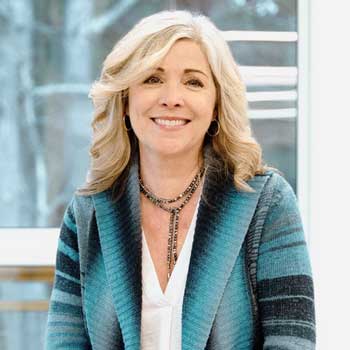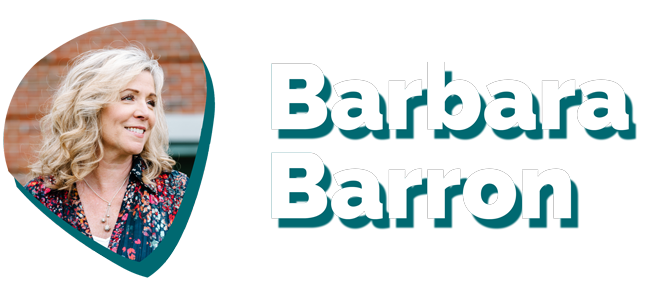by Barbara Barron | Posted April 19th, 2023 | Subscribe to this newsletter

New parents. A fresh start. A new crop of prospects. A new group of people to bring into the community family fold. So much potential.
It’s well known that parents never feel as optimistic, as hopeful, and as positive about a school as they do during the first trimester. There can be – and often are – upticks in this sentiment at other times in the year, but the start of a new school year – at a new school — is just so special.
Everything is possible; nothing has gone wrong, yet!
As the people tasked with helping make that transition and entry into our communities as positive and smooth as possible, what can we do to set the stage for the great start of a relationship? I’ve written about the value of a great welcome letter. And I’ve talked about how important it is to be part of the welcoming team early on, so we aren’t seen as “those people ” only interested in grubbing money. (Ew.)
We need to be present at open houses, and “revisit events.” We must be visible during the first days of school to help make important impressions and connections.
This isn’t just about our intrinsic desire to get to know these new community members. They have a strong desire to meet one another, and we are there to help bring those connections to fruition. We are in a great position to help ensure that process — because we already know the returning families. We can be helpful by introducing people who are in the same professions or live or work in the same neighborhoods.
But what else helps?
In other words, how can we begin what might be a 10+ year relationship with a new family that sets the right tone and creates a launching pad for great things down the road?
Have you subscribed to this newsletter yet? It only takes a minute.
Start at the very beginning. (A very good place to start.)
Fortune favors the school that proudly offers an outstanding program and boldly asks families to support it from the very start. Note I didn’t say “arrogantly.” Just confidently. They are delivering on their inspiring missions by clearly articulating how they are different and what that means for their students. Therefore, their advancement office is unapologetic about asking families to give to make that all happen. Pure and simple.
This can happen at schools with even the youngest students. I consult with a fabulous preschool completing a major capital campaign. Many of their families with children as young as 2 have made the largest charitable gift of their lives.
Why? Because of the outstanding program and the powerful culture the school has created. It’s deeply gratifying to be their advisor on this journey.
What else can schools do to engage families early?
Many of my clients have taken my advice to make visible and explicit the things we do that are invisible and confusing to new families. This is particularly true with schools enrolling families without independent school experience or, as above, with young students. And while these parents, generally, have little to no experience with giving to an independent school, or possibly, charitable giving anywhere, we can be the place to introduce them to the power and joy of philanthropy.
Yes, the high schools and colleges that await their students later will benefit from our labors now as our new parents become educated and more sophisticated givers. But today, we’re the place where it happens first. We can be where the love begins.
One of the simplest and most effective ways to do that is to create a clear and helpful guide.
Some tips on creating your “Guide to Giving and Getting Involved”
I advise clients to produce a “Guide to Giving and Getting Involved”. You can, obviously, choose another name that better suits your school culture. Regardless of what you call it, here are the main elements:
1. A clear explanation of the ways families can volunteer. It’s best to include contact information for the chairs of various committees. A set of known dates or a link to the calendar is good.
2. Offer a glossary. Too often we use jargon or “school-speak” that those in the know know but newcomers find confusing. And worse, excluding. Don’t assume. Spell it out. What do names, places, events, and other terms mean?
3. Describe what the various giving opportunities are, and when families can expect to be contacted about participating in them. Include asks that are for their time as well as their treasure. Detailing this is helpful for parents’ planning purposes. It will also help you see where you are unconsciously creating traffic jams in terms of scheduling or giving. Start this work with the leadership team so you capture all the touch points parents will experience from the business office, the registrar, and others. Then collaborate with the PA leadership to fold in their events and deadlines. The result will be astoundingly comprehensive. And it will help avoid the nightmare of having an appeal arrive in the mailbox at the same time as the tuition invoice or the deadline to purchase uniforms.
4. Tell some stories. Ask a few engaged parents to tell why they give and volunteer. What do they get from the experience that others may wish to emulate?
5. Make the process clear. What are job descriptions for key leadership roles on the PA and the Board of Trustees? What is the process that parents who have time, talent, and treasure to share can do so? When does the process begin and end in each annual cycle?
6. Use great photography. Always.
Some of my client schools produce printed versions of the Guide each year. They mail it in the packet of materials to new families. But they also place them in smart spots on campus like in the admission office and the Head’s office.
Other schools choose to only publish this online. (It does make it easier to make updates. And it has the advantage of being visible to inquiring families.)
Regardless, let’s be transparent from the start about what engagement really means at our school. Let’s be clear about what we hope and expect from families as they join our wonderful communities.
If you’d like help planning to create a Guide for your school, or getting others on board with the concept, let me know. And, as always, happy to hear your suggestions.
Happy connecting!
Barbara Barron

Share this post:
About the Author

BARBARA BARRON is one of the most respected and highly sought-after independent advancement professionals in the country, having worked with dozens of schools in every corner of the United States.
She has raised over $20 million for schools where she served as the Director of Development. Barbara is a New York Times bestselling author, speaker, and presenter who currently advises dozens of schools in various capacities. She is considered a thought leader in the world of advancement, with her writing widely shared by professionals in development offices worldwide.






